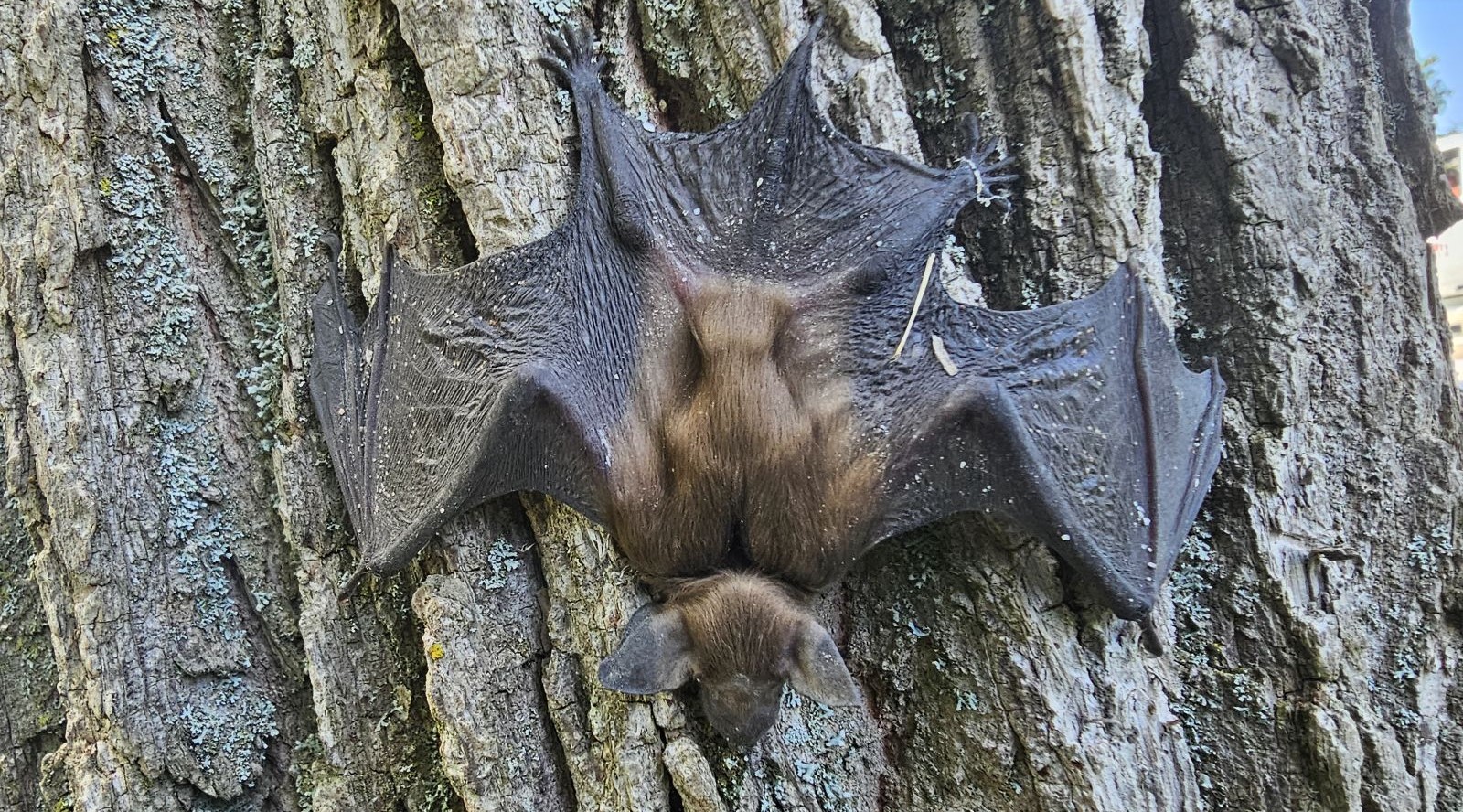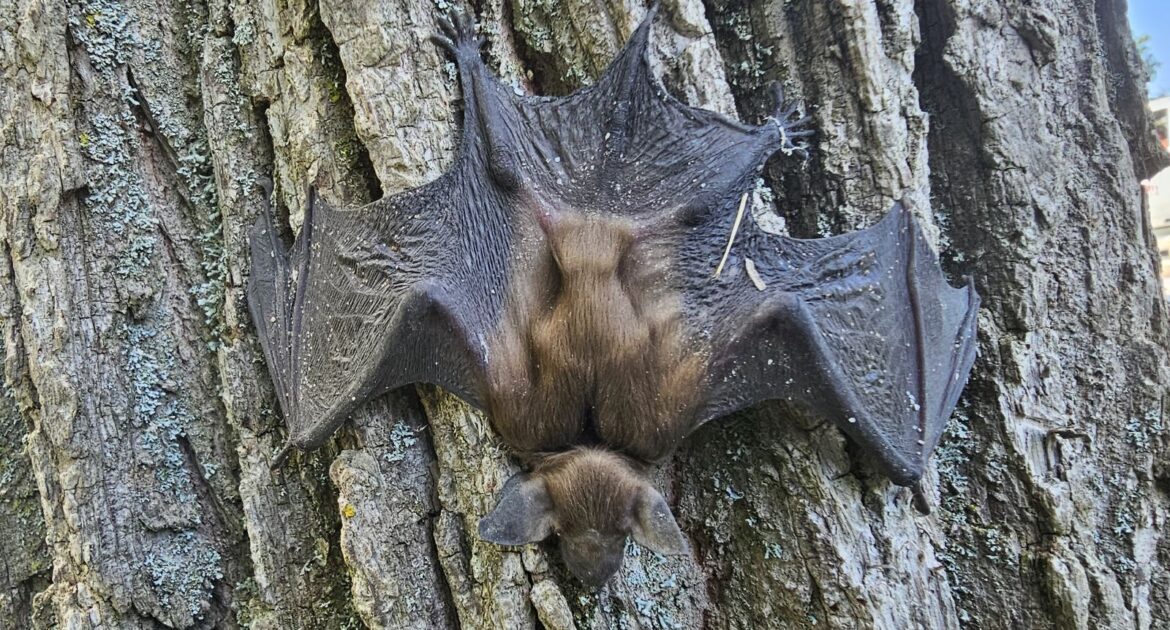Bats are incredible creatures, known for their unique ability to fly and their nocturnal lifestyles. They play a vital part in maintaining ecosystems. By feasting on insects, bats help control pest populations and even contribute to pollination. Even though they’re a huge benefit to the environment, their mysterious habits often leave people with questions. One of the most common is, “Do bats hibernate?”
If you’re in Kitchener, knowing more about bat hibernation can help you understand their winter behaviours and how they might impact your home. Bats sometimes take refuge in residential properties during the colder months, potentially leading to unwanted problems. Keep reading to learn more about hibernation, bat behaviour, and how to address bat issues if they arise in your home.
What is Hibernation?
Hibernation is a smart survival tactic used by animals during the winter when food is scarce. It’s a state of deep rest where the body slows down significantly. Breathing and heart rates drop, and energy is conserved to help the animal endure the harsh winter conditions.
Bats use hibernation to survive when their main food source, insects, disappears after the temperatures drop. By slowing their metabolism, they need much less energy to get through the season. This clever adaptation is key to how bats make it through the cold months. However, while they hibernate, they still need a safe and secure spot to settle down for winter.
Do All Bat Species in Ontario Hibernate?
Bats are fascinating creatures, and their winter survival strategies are as diverse as the species themselves. While some bats migrate to warmer areas where insects remain plentiful, others stay put and prepare for the colder months. Not all bats rely solely on hibernation; some engage in a less intense behavior called torpor. Torpor allows bats to conserve energy for shorter periods rather than the extended dormancy of hibernation.
Ontario is home to a variety of bat species, each with its own approach to surviving the winter. Learning about their habits not only helps us appreciate these incredible animals but also encourages coexistence and conservation.
The Little Brown Bat and Big Brown Bat
Two of the most common bat species in Kitchener are the Little Brown Bat and the Big Brown Bat. Both species typically hibernate through the winter, seeking sheltered havens such as caves, old mines, or abandoned buildings where temperatures remain stable and free from disturbance.
- Little Brown Bat: This small but resilient creature has seen its populations decline due to threats like White-Nose Syndrome. During hibernation, it remains inactive for months, surviving on the fat reserves it stores up during the warmer months.
- Big Brown Bat: Slightly more adaptable than its smaller relative, the Big Brown Bat often chooses human-made structures, including attics or basements, as hibernation sites. This ability to thrive in urban environments makes it one of the species homeowners are most likely to encounter.
Eastern Red Bat and Hoary Bat
Unlike their hibernating counterparts, the Eastern Red Bat and Hoary Bat take a different approach to winter. They migrate south to warmer regions where insects remain available year-round.
- Eastern Red Bat: This bat’s striking reddish-orange fur makes it instantly recognizable. It prefers to roost in trees and shrubs during migration, blending into its surroundings to avoid predators.
- Hoary Bat: Known for its larger size and frosty gray fur, the Hoary Bat also undertakes long migratory journeys. It is one of the few bat species capable of traveling thousands of kilometers to find food and a more hospitable climate.
Silver-Haired Bat
The Silver-Haired Bat is a bit of a wildcard. Some individuals migrate short distances to find better food sources, while others choose to hibernate locally if conditions are suitable. Their mix of behaviors demonstrates how adaptable bats can be based on their environment and the availability of resources.
Coexisting with Bats
Understanding the winter habits of Ontario’s bat species is key to peaceful coexistence and protecting these essential animals. Bats play a crucial role in controlling insect populations, benefiting both ecosystems and agriculture.
If you notice bats using your attic or other parts of your property as their winter refuge, it’s vital to handle the situation responsibly. Partnering with wildlife specialists ensures the safety of both your home and these beneficial creatures. Humane approaches to bat management protect their well-being while addressing your concerns.
Preserving bat populations starts with awareness and action. By learning about their unique survival methods and respecting their space, we can protect these valuable mammals while maintaining our homes and environment.
Where Do Bats Hibernate?
When it’s time to hibernate, bats look for cozy spaces that mimic natural, winter-safe conditions. Common natural hibernation sites include caves, mines, and rock crevices. These spots provide the steady temperature, darkness, and quiet that bats need to conserve energy.
But in urban areas like Kitchener, bats often turn to man-made structures when these natural spaces aren’t available. Your attic, basement, or even wall cavities could serve as a perfect hibernation site for them. These spaces provide protection from the elements while staying relatively undisturbed.
Although these areas might be ideal for bats, they can pose problems for homeowners. The presence of bats may lead to cleanliness concerns or potential health risks, particularly from the accumulation of bat droppings, also known as guano. This makes it important to watch for warning signs and address the matter promptly.
Signs Bats Are in Your Home
If bats have found their way into your home to hibernate, there are usually a few clear indicators. Being aware of these signs can help you act before the situation worsens:
- Unusual noises: Squeaking, scratching, or rustling sounds coming from walls or attics are a strong sign.
- Guano buildup: You might spot small piles of bat droppings near entry points or under their roosting spots. Guano has a distinctive appearance and smell.
- Visible bats: Sometimes, bats themselves may be seen entering or leaving your home in the evening, especially near vents or chimneys.
- Small openings: Gaps, cracks, or openings in your home’s exterior can act as entry points for bats looking for warmth.
If you notice these warning signs, it’s critical to handle the matter carefully and effectively. Ignoring bats in your home can lead to larger colonies, increased property issues, and potential health hazards. At the same time, bats play an important role in the environment, so humane handling is essential.
How Skedaddle Can Help
At Skedaddle Humane Wildlife Control, we specialize in dealing with bat hibernation issues in a way that’s both safe and effective—for your family and the bats. Our approach is rooted in humane practices that respect these fascinating creatures and their role in the ecosystem.
Here’s how Skedaddle can assist:
- Thorough assessments: Our experts will carefully inspect your home for signs of bat activity. We’ll locate their hibernation spots and identify how they’re getting in.
- Entry point sealing: Once we’re sure your home is clear of bats, we’ll seal all access points to prevent them from returning.
- Professional cleaning: Bat guano can pose health risks and unpleasant odours. Our team offers top-grade cleaning and decontamination services to make your home safe again.
- Eco-friendly methods: We’re committed to solutions that safeguard both your property and bat populations. Every step we take ensures a humane and environmentally responsible outcome.
With our years of experience and passion for wildlife protection, Skedaddle can provide peace of mind and help Kitchener homeowners maintain a safe, bat-free living space.
Take Action Today: Contact Skedaddle
Bats are remarkable creatures that play a key role in the natural balance of our environment. However, when their seasonal habits lead them to take up residence in your home, it can cause concern. Learning about bat hibernation, how to identify activity, and taking prompt action can save you from a lot of worry.
If you suspect bats are hibernating in your home, don’t hesitate to reach out to Skedaddle Humane Wildlife Control in the Waterloo Region. Our team understands bat behaviour and provides efficient, humane solutions to address your concerns. Contact us today to ensure your home remains safe while these fascinating creatures continue to thrive in their natural environments.
FAQ’s
Do all bats hibernate, or do some stay active in the winter?
Not all bats hibernate! While many species hibernate during the colder months, some migrate to warmer areas or enter shorter periods of rest called "torpor." It all depends on the species and their environment.
How can I tell if bats are hibernating in my home?
Signs of bats hibernating in your home include squeaking or scratching noises, guano (bat droppings) near entry points, and even sightings of bats flying around your property before winter. It’s always a good idea to inspect your attic, basement, or chimney for potential entry points too.
Where do bats usually hibernate if they’re not in homes?
Bats often hibernate in places like caves, mines, or rock crevices. However, in urban areas like Kitchener, they may settle in attics, basements, or walls because these spaces mimic the dark, stable, and quiet conditions they need.
Why is it important to address bats in my home quickly?
Ignoring bats in your home can lead to serious issues, such as property damage and health concerns from guano (bat droppings). Even though bats aren't active during hibernation, their presence can create problems if left unchecked.
How does Skedaddle handle bats in homes during hibernation?
Skedaddle provides a humane and eco-friendly approach. Our team identifies bat activity, seals entry points after ensuring the bats have left, and thoroughly cleans and decontaminates your home. We prioritize both your safety and bat conservation throughout the process!




